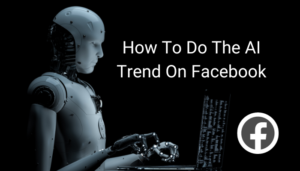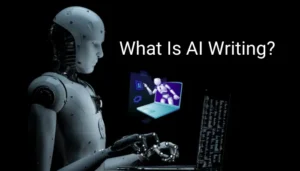Artificial Intelligence (AI) covers a wide range of technologies. Amongst the most popular and talked about are Generative AI and Predictive AI. While both use huge volumes of data to enable insights and automation, they vary in methodology, purpose, and application.
Generative AI vs Predictive AI: The Major Differences
Discovering the basic differences between these AI paradigms helps us further understand their functioning and their significance in the upcoming developments in AI tools and platforms with human interactivity.

Generative AI
Generative AI is a new and exciting way to look at AI and its possibilities. It is a new content or data generation based on the learning of existing patterns and datasets. Types of AI generating new, original content, not just analyzing and interpreting existing information. For the related story: Is Chat GPT Generative AI?
How Generative AI Works:
Amplification of Creativity: It uses neural networks to generate content, be it images, music, text, that never existed in the training set.
Learning Patterns: They learn patterns and mimic them to generate new content that is likely to be quite realistic.
Examples include Generating realistic human-like facial images or writing original pieces of music.
Predictive AI
Conversely, Predictive AI deals with anticipating or predicting future events based on historical information. You utilize existing data to identify patterns, trends, and correlations to better predict potential future events or behaviors.
Key Aspects of Predictive AI:
Data-Driven Forecasts: Uses past data to generate prognostications about what will come next.
Decision Support: Helps in decisions, giving insight into potential future states.
For example, stock market predictions and customer behavior prediction in marketing.
Great Insights! Predictive AI vs. Generative AI
Familiarity with these differences allows companies and entrepreneurs to effectively implement the most current AI technology to fulfill their requirements across various industries in an efficient, creative, and well-grounded manner.
Application Scope:
GAI is mainly utilized in fields focused on creativity, such as art, music, and content creation. Its uses range from generating lifelike images to composing music to writing essays that read like they were produced by a human.
Predictive AI is used in finance, healthcare, and the marketing industry. It helps with risk assessment, personalized medicine, and targeted advertising.
Learning Mechanisms:
Generative AI: Trains on data to produce new content that is similar to the original data set, but does not recreate it. It is trained to just generate new outputs.
Predictive AI: These tools look back at past data to find patterns and trends that will help predict future happening or behavior based on what it learned.
Future Potential:
Generative AI: Holds potential for improving creativity and innovation in multiple sectors, leading to advancements in artistic expression and content generation.
Predictive AI: This technology has been increasingly fine-tuned throughout time and is transforming how companies make decisions and drive efficiency across industries.
Comparison Table: Generative AI vs Predictive AI
| Aspect | Generative AI | Predictive AI |
| Function | Generates new, original content based on existing data | Predicts future outcomes based on historical data |
| Learning Approach | Learns patterns to create new content | Analyzes historical data for forecasting future trends |
| Applications | Art, music, and content creation | Finance, healthcare, and marketing |
| Learning Mechanism | Creates new content without replication | Identifies patterns to predict future events |
| Usage Scope | Creative fields, innovative content creation | Business decisions, risk assessment, and personalized medicine |
| Potential | Enhances creativity and innovation | Improves decision-making processes and aids in planning |
Which One to Choose?

Choosing between Generative AI and Predictive AI hinges on the intended application and desired outcomes. Here’s a quick comparison:
- Use Generative AI when:
- Creativity and original content creation are paramount.
- The goal is to generate new, realistic data based on existing patterns.
- Opt for Predictive AI if:
- Predicting future trends or outcomes based on historical data is crucial.
- Decision-making processes require data-driven insights and forecasts.
Usage in Different Countries
- Generative AI‘s adoption varies across countries, with creative industries embracing its potential differently. While countries like the United States and Japan leverage Generative AI extensively in art and media, European nations are increasingly utilizing it in advertising and design sectors.
- Predictive AI finds widespread use globally. Countries like China utilize it significantly in financial sectors for risk assessment, while countries in North America rely on it for personalized healthcare and predictive marketing strategies.
Understanding the regional disparities in AI adoption allows for tailored implementation strategies that align with specific cultural and industrial contexts.
Conclusion
In the rapidly evolving world of AI, Generative AI and Predictive AI represent two distinct approaches, each with its own unique strengths and applications. Generative AI fosters creativity and drives innovation by producing new content, while Predictive AI focuses on analyzing data to anticipate future trends and support informed decision-making.
Understanding the differences between AI as a whole and Generative AI specifically allows individuals and businesses to harness the full potential of these groundbreaking technologies, leading to transformative advancements and game-changing innovations.










